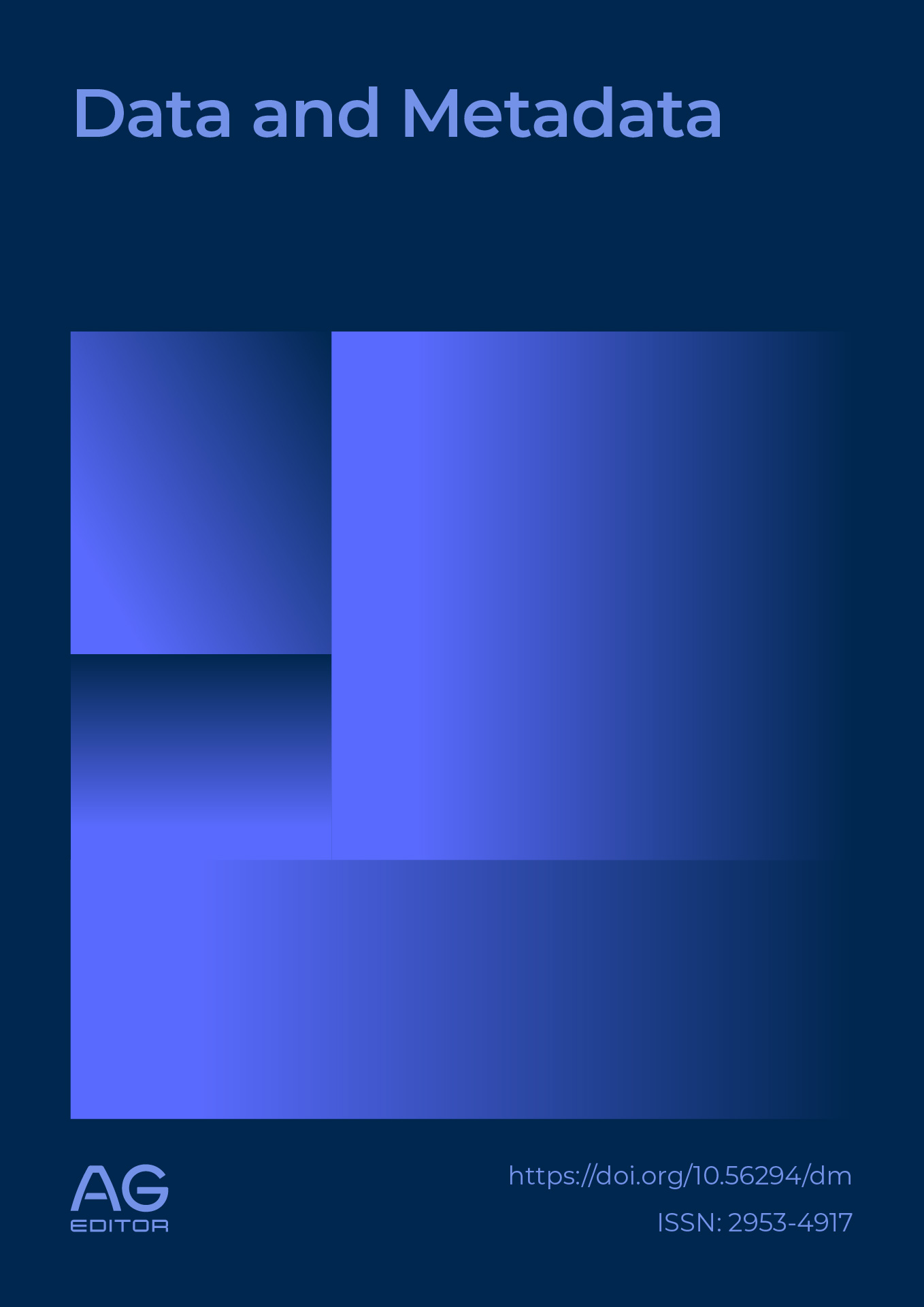Hybrid weighted sequential learnong technique for structural health monitoring using learning approaches
DOI:
https://doi.org/10.56294/dm2025510Keywords:
Structural Health Monitoring, Damage Detection, Deep Learning, Finite Element Analysis, VibrationAbstract
Abstract- Structural Health Monitoring (SHM) plays a vital role in damage detection, offering significant maintenance and failure prevention benefits. Establishing effective SHM systems for damage identification (DI) traditionally requires extensive experimental datasets collected under varied operating and environmental conditions, which can be resource-intensive. This study introduces a novel approach to SHM by leveraging a Hybrid Weighted Sequential Learning Technique (HWSLT) classifier, which uses Finite Element (FE) computed responses to simulate structural behaviors under both healthy and damaged states. Initially, an optimal FE model representing a healthy, benchmark linear beam structure is developed and updated using experimental validation data. The HWSLT classifier is trained on SHM vibration data generated from this model under simulated load cases with uncertainty. This allows for minimal real-world experimental intervention while ensuring robust damage detection. Results demonstrate that the HWSLT classifier, trained with optimal FE model data, achieves high accuracy in predicting damage states in the benchmark structure, even when mixed with random disturbances. Conversely, data from non-ideal FE models produced unreliable classifications, underscoring the importance of model accuracy. These findings suggest that the integration of ideal FE models and deep learning offers a promising pathway for future SHM applications, with potential for reduced experimental costs and enhanced damage localization capabilities
References
1. Macleod, G. Dobie, S. G. Pierce, R. Summan, and M. Morozov, “Machining-based coverage path planning for automated structural inspection,” IEEE Trans. Autom. Sci. Eng., vol. 15, no. 1, pp. 202–213, Jan. 2018
2. Entezami, H. Shariatmadar, and S. Mariani, “Fast unsupervised learning methods for structural health monitoring with large vibration data
3. Pnevmatikos, B. Blachowski, G. D. Hatzigeorgiou, and A. Swiercz, “Wavelet analysis based damage localization in steel frames with bolted connections,” Smart Struct. Syst., vol. 18, no. 6, pp. 1189–1202, Dec. 2016.
4. Zeng, Y. Liu, G. Zhang, L. Tang, Z. Jiang, and Z. Liu, “Analysis of structural responses of bridges based on long-term structural health monitoring,” Mech. Adv. Mater. Struc., vol. 25, no. 1, pp. 79–86, 2018.
5. Ma, S.-F. Jiang, C. Wu, and S.-Y. Wu, “Identification of sudden stiffness change in the acceleration response of a nonlinear hysteretic structure,” Shock Vib., vol. 2020, pp. 1–20, Jan. 2020.
6. Sadhu, “An integrated multivariate empirical mode decomposition method towards modal identification of structures,” J. Vib. Control, vol. 23, no. 17, pp. 2727–2741, Oct. 2017.
7. Tang, Z. Chen, Y. Bao, and H. Li, “Convolutional neural networkbased data anomaly detection method using multiple information for structural health monitoring,” Struct. Control Health Monitor., vol. 26, no. 1, p. e2296, Jan. 2019
8. Yang and R. Rai, “Machine auscultation: Enabling machine diagnostics using convolutional neural networks and large-scale machine audio data,” Adv. Manuf., vol. 7, no. 2, pp. 174–187, Jun. 2019
9 .Virtanen et al., “Scipy 1.0: Fundamental algorithms for scientific computing in Python,” Nature Methods, vol. 17, pp. 261–272, Mar. 2020.
10. Kiranyaz, O. Avci, O. Abdeljaber, T. Ince, M. Gabbouj, and D. J. Inman, “1D convolutional neural networks and applications: A survey,” 2019, arXiv:1905.03554
11. Paszke et al., “Pytorch: An imperative style, high-performance deep learning library,” in Proc. NeurIPS, 2019, pp. 8024–8035.
12. He, X. Zhang, S. Ren, and J. Sun, “Deep residual learning for image recognition,” in Proc. IEEE Conf. Comput. Vis. Pattern Recognit. (CVPR), Jun. 2016, pp. 770–778
13 .Howard and S. Gugger, “Fastai: A layered API for deep learning,” Information, vol. 11, no. 2, p. 108, Feb. 2020.
14 .Li, C. Lam, J. Yao, and Q. Yao, “On testing for high-dimensional white noise,” Ann. Statist., vol. 47, no. 6, pp. 3382–3412, Dec. 2019.
15.de Castro, F. G. Baptista, and F. Ciampa, “New signal processing approach for structural health monitoring in noisy environments based on impedance measurements,” Measurement, vol. 137, pp. 155–167, Apr. 2019.
16. Ibrahim, A. Eltawil, Y. Na, and S. El-Tawil, “A machine learning approach for structural health monitoring using noisy data sets,” IEEE Trans. Autom. Sci. Eng., vol. 17, no. 2, pp. 900–908, Apr. 2020 . 17. Tran-Ngoc et al., “An efficient approach to model updating for a multispan railway bridge using orthogonal diagonalization combined with improved particle swarm optimization,” J. Sound Vib., vol. 476, Jun. 2020
18.Ho, T. Hoang, G. De Roeck, T. Bui, and M. Wahab, “Effects of measuring techniques on the accuracy of estimating cable tension in a cable-stay bridge,” in Proc. DAMAS, 2020, pp. 433–445.
19 .Farrar, C. R. & Worden, K. An introduction to structural health monitoring. Philos. Trans. R. Soc. A Math. Phys. Eng. Sci. 365, 303–315
20. Güemes, A., Fernández-López, A., Díaz-Maroto, P. F., Lozano, A. & Sierra-Perez, J. Structural health monitoring in composite structures by fber-optic sensors. Sensors 18, 1094. https://doi.org/10.3390/s18041094 (2018).
21. Gulizzi, V., Rizzo, P., Milazzo, A. & LaMalfaRibolla, E. An integrated structural health monitoring system based on electromechanical impedance and guided ultrasonic waves. J. Civ. Struct. Health Monit. 5, 337–352. https://doi.org/10.1007/s13349-015-0112-0 (2015)
22. Dorafshan, S., Tomas, R. J. & Maguire, M. Comparison of deep convolutional neural networks and edge detectors for image-based crack detection in concrete. Constr. Build. Mater. 186, 1031–1045 (2018).
23. Quqa, S. et al. Two-step approach for fatigue crack detection in steel bridges using convolutional neural networks. J. Civ. Struct. Health Monit. 12, 127–140 (2022).
24 .Bai, Y., Zha, B., Sezen, H. & Yilmaz, A. Engineering deep learning methods on automatic detection of damage in infrastructure due to extreme events. Struct. Health Monit. 14759, 217221083649 (2022).
25. Tenreiro, A. F. G., Lopes, A. M. & da Silva, L. F. A review of structural health monitoring of bonded structures using electromechanical impedance spectroscopy. Struct. Health Monit. 21, 228–249. https://doi.org/10.1177/1475921721993419 (2022).
26 .Fan, R. et al. Road crack detection using deep convolutional neural network and adaptive thresholding. In 2019 IEEE Intelligent Vehicles Symposium (IV), 474–479 (IEEE, 2019).
27. Boukellif, R. & Ricoeur, A. Identifcation of crack parameters and stress intensity factors in fnite and semi-infnite plates solving inverse problems of linear elasticity. Acta Mech. 231, 795–813. https://doi.org/10.1007/s00707-019-02575-9 (2020).
28. Chen, Y., Liu, Z.-Q. & Liu, H.-L. Parameters identifcation for crack in elastic structures based on fber bragg grating. Optik 154, 685–691. https://doi.org/10.1016/j.ijleo.2017.10.126 (2018).
29 .Andersson, F., Hagqvist, A., Sundin, E. & Björkman, M. Design for manufacturing of composite structures for commercial aircrafthe development of a DFM strategy at SAAB aerostructures. Proced. Cirp 17, 362–367. https://doi.org/10.1016/j.procir.2014.02. 053 (2014)
30. Azimi, M., Eslamlou, A. D. & Pekcan, G. Data-driven structural health monitoring and damage detection through deep learning: State-of-the-art review. Sensors 20, 2778. https://doi.org/10.3390/s20102778 (2020).
Downloads
Published
Issue
Section
License
Copyright (c) 2025 Dinesh Kumar Anguraj, Sivaneasan Bala Krishnan, T Sathish Kumar, Prasun Chakrabarti, Tulika Chakrabarti, Martin Margala, Siva Shankar S (Author)

This work is licensed under a Creative Commons Attribution 4.0 International License.
The article is distributed under the Creative Commons Attribution 4.0 License. Unless otherwise stated, associated published material is distributed under the same licence.



